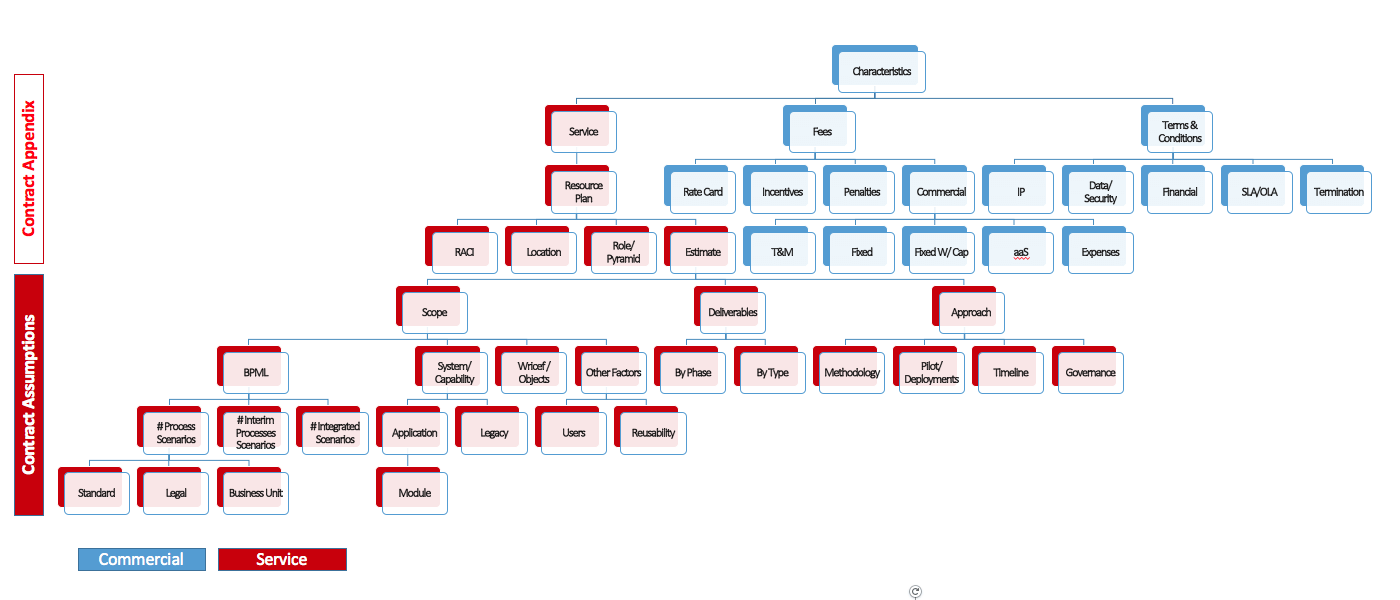- UpperEdge
- Reading Time: 3 minutes

Typical sourcing processes of IT consulting service providers for digital transformations do not necessarily result in a better deal or a better outcome. A not-so-satisfactory outcome can be a result of:
- The complexity of the solution being proposed
- Buyer knowledge, data, or experience with the service (or lack of), or
- The ability for the buyer to understand all dimensions of the deal and their interdependencies.
During the IT service sourcing sales process, vendor solution experts often try to represent the key buyer’s values while optimizing their costs to increase the probability of the sale. The solutions from multiple vendors are rarely an apples-to-apples comparison nor do they always represent the final or complete needs of the buyer.
Various IT service providers often do not have the same interpretation of the buyer’s needs and requirements. In some cases, vague assumptions are made to minimize costs or the requirements are interpreted incorrectly. In addition, buyers rarely consider additional services they may need to support missing or future requirements, to ensure they get increased incentives or discounts.
To optimize the value from different vendors and to provide a fair process, buyers need to understand each vendor from both the commercial and the service perspectives (Figure 1) and the tradeoffs between them. For example, how deployment approaches affect interim business processes along with the related effort needed, and how legacy efforts are accounted for in the overall timeline, are just two potential disconnects. In addition, buyers need to understand that roles, levels and deliverables are not standardized across the industry. The services proposed by the vendors also do not always identify all that is required to achieve an outcome, as some are generally assumed to be the buyer’s responsibility.
Figure 1: Commercial and Service Factors of IT Service Providers (click graphic to enlarge)
Ten most common buyer misconceptions
- A favorable rate card reduces the cost of services
- Fixed fee = Fixed outcome
- The scope for all activities required for the program are listed on the vendor SOW
- All vendor responses to your RFP are proposing the same service
- Levels/roles of resources are standardized within your industry
- An agile methodology requires less effort than a waterfall
- The methodology and deliverables are standardized within your industry
- Client performance factors are considered in a vendor’s estimate (NOTE: The vendor is not responsible for incorrect client assumptions)
- A delay or missed milestone can be attributed 100% to a specific responsible owner (i.e., client or vendor)
- The full list of services is considered (i.e., interim state variations, application support both during and after deployment, etc.).
Large transformation organizations should consider a Third-Party Advisor (“TPA”) to assist with the sourcing process in an effort to improve vendor value, reduce program and business risks and improve overall quality. Most organizations typically do not have internal experience, knowledge or data to support sourcing of large business or digital transformations since transformations are not frequent events.
Key qualities organizations should look for in a TPA
- Benchmark data of both commercial and service factors (see Figure)
- Ability to assess services and identify potential gaps, risks and vendor differences
- Proven playbooks, strategies and tactics to improve outcomes
- Vendor and market knowledge of governance, capabilities/offerings, roadmaps, sales tactics, incentives and other relevant data
- Insight on potential product and service challenges throughout the program and service lifecycle, with strategies and tactics to minimize the impacts and risk
- Highly experienced team representing industry, sourcing, solution and vendor backgrounds.
